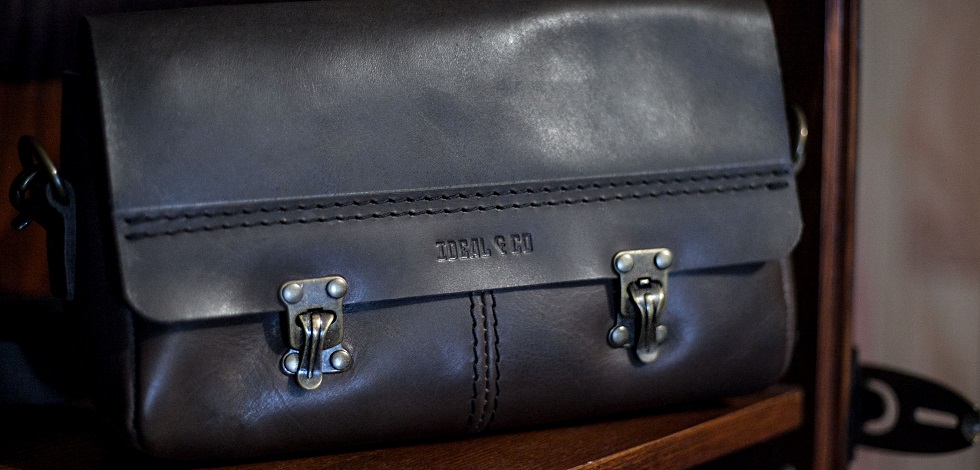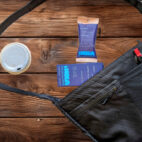A Carry Adventure through Portugal Part III :: Ideal & Co.
In our last instalment of the great Portuguese Carry adventure, we met Ina Koelln, Lisbon-based designer and innovator of bags made from cork bark carry leather. Today, we ride a train north to the city of Porto for scene change, and catch up with the brains behind the brand that catalyzed the Portuguese leather carry movement, and helped reinvigorate a forgotten heritage industry.
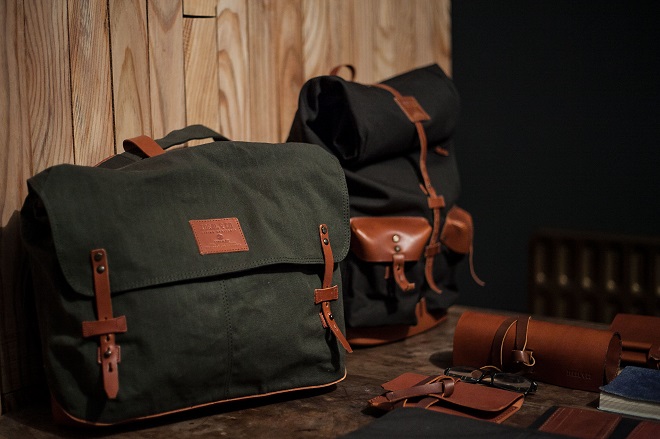
On our final morning in Lisbon, we meandered along the winding cobbled lanes of Alfama to nearby station Santa Apolónia, and leapt aboard a three-hour train ride north to Portugal’s second largest city: Porto. It would be a tough act to follow after such a rich and magical time in the Land of Leather and the City of Seven Hills. But Porto proved equally beautiful, if not somewhat smaller and different to Lisbon. They say that Porto is where the work gets done, and Lisbon is where the money gets spent. For me, Lisbon was love at first sight; Porto disperses its glory in increments. And once it does, you’re sold.
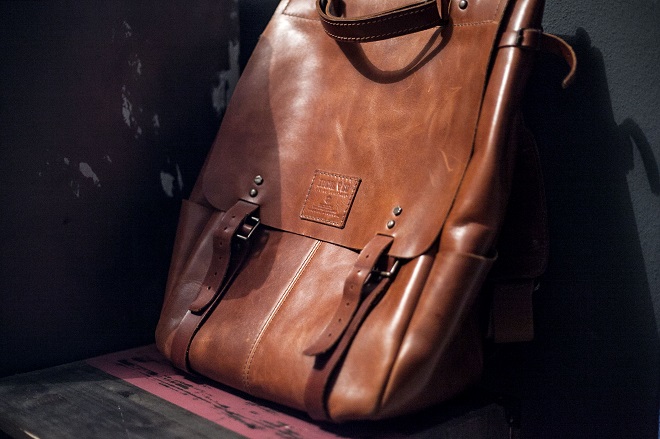
Porto is UNESCO heritage listed, and for good reason: the city is a cluster of Romanesque, Gothic, Renaissance, Baroque, neoclassical and modern architecture, all in one manageable, if not hilly, locale. Its earliest inhabitants, the Phoenician traders of 8th century BC, inspired this incredible hub – spread over two banks, its stunning tiered urban landscape hugs the hillsides overlooking the sparkling River Douro, a stunning waterline that snakes beneath monumental bridges all the way out to the dramatic whitewash of estuary breakers and the endless horizon of the Atlantic.
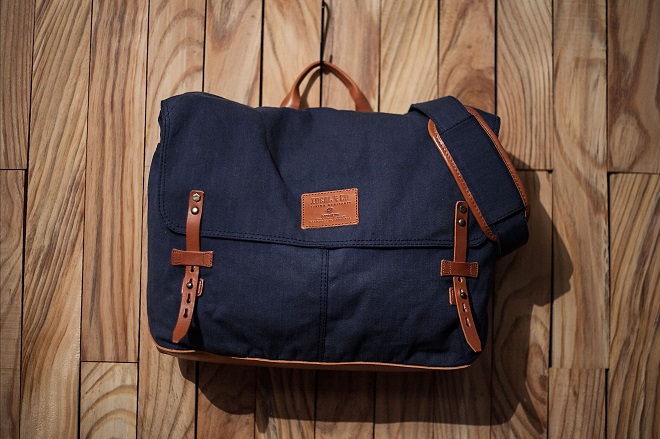
Arriving on a sleepy Sunday afternoon, we set up shop in our apartment in the Bolhao neighbourhood, before pulling up a pew in the old town by the shimmering river, drinking cold Super Bocks in the sun, and mopping up plates of oil-drizzled chorizo, locally caught sardines and bacalhau.
The next morning, we took a casual stroll down to Largo de São Domingos, HQ of local carry aficionado José Lima and the brand he co-founded: Ideal & Co. The first thing I noticed about José was his style: a thick quaff of hair, handsome old-time beard, in which a twill moustache would not have been out of place. He apologized for his English – unnecessary, as it was just fine, much better than my Portuguese.
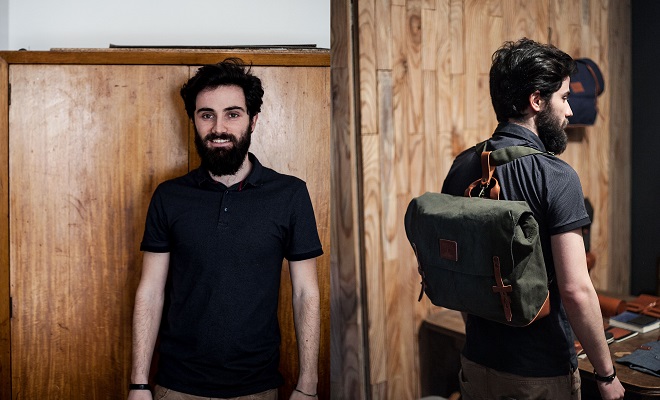
José co-founded Ideal & Co with his partner, Rute Vieira, in 2012. They were inspired by the story of Rute’s grandfather, Antonio Vieira, and their enterprise is very much a continuation of his legacy:
In 1935, as a young boy of 14 growing up in a small village near the Serra de Aire e Candeeiros (just near Alcanena), Antonio began his own business buying and selling animal hides: he would traverse the rocky, shrapnel roads of Alcanena on bicycle, and sell his hides to local tanners – perhaps even to the uncle of Pedro and Luis Caetano, who we learned about on our visit to their Alcanena workshop earlier in the week. Antonio’s business grew, and in 1959 he opened his own leather tannery: Fabrica Curtumes Ideal.
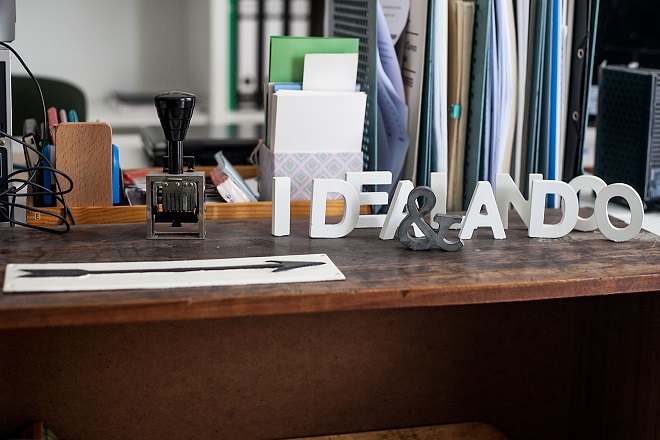
In today’s modern market, dominated by chemical-treated hides, only a handful of families work with leather the Antonio Vieira way. In name, vision and ethic, Ideal & Co is breathing new life into this largely forgotten heritage. They are not only paying homage to Antonio and the ethos and era he represents, but are reviving those very traditions, and clearing a fresh space for them in the here and now.
“Our brand has its origins in the past,” José said. “We have a lot of heritage in the brand, and we try to work this heritage: to do things like before, but adapt to the present, to the future.”
Passionate is one word to describe Lima’s vibe; authentic is the other. Ideal & Co creates products from 100% vegetable-tanned leather: lasting pieces made with superior quality materials and workmanship – all of it sourced from the same region in which Antonio Vieira built his legacy 80 years ago. They pride themselves on sharing, in their terms, the richness of what is genuinely ‘Made in Portugal’.
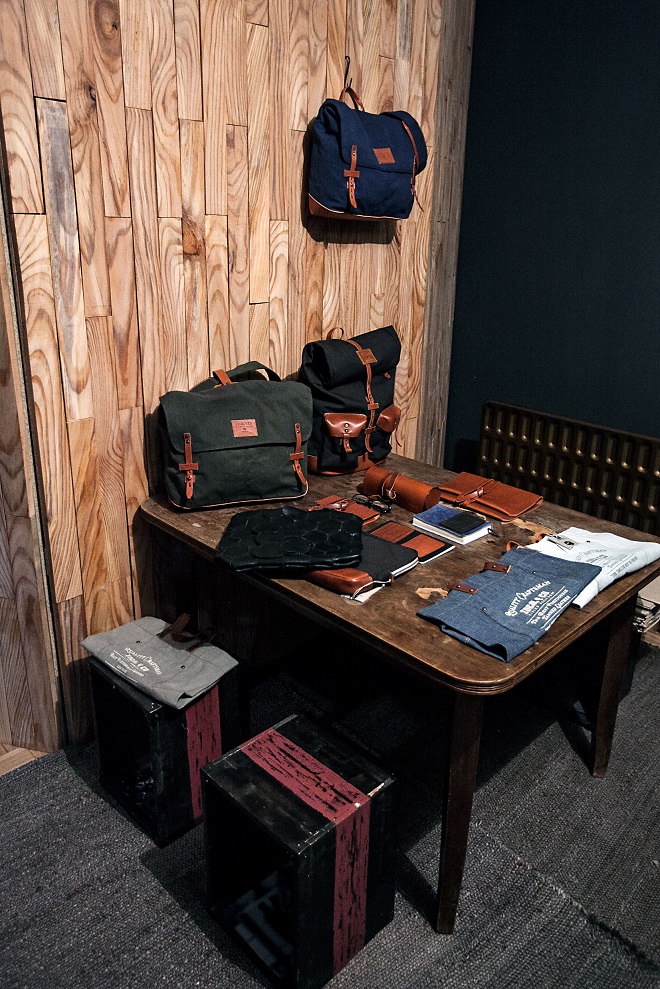
Ideal & Co were the first modern carry label in the country to return to vegetable-tanned leather. “In 2012, no one knew what vegetable-tanned leather was. We had so many emails from people asking if it was vegan. We think this is a really important industry: it’s only made by three or four companies, so we need to push, to communicate. We work a lot to do this.”
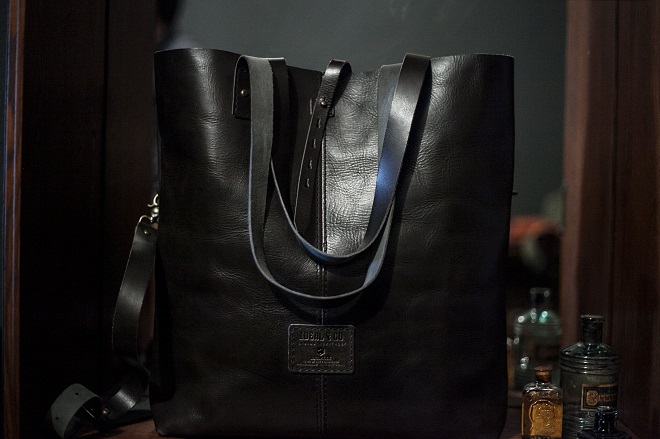
The Global Financial Crisis was tough on Portugal, and it hit those smaller companies particularly hard. “It was a strong crisis,” said José. For him, breathing life back into ancestral production methods, and the community of specialist artisans, was crucial.
“Others might use vegetable-tanned leather, but they don’t know why: they don’t communicate about the leather: why it’s important, why it’s better. We felt it was very important to communicate all this.“
As well as partner, Rute, helping José out is his right hand man, Jorge Pereira, a relaxed, friendly fella with dreadlocks, who we met in a rear showroom. Here, the latest products were spread across display shelves, stylish and immaculate: plush russet leather backpacks and messengers, fresh wallets and cardholders. My eyes fell deep into the black ‘I-Link’ bag, a one-off prototype constructed from hexagonal patches made of refuse tannery and shoe industry leathers: stealthy and futuristic.
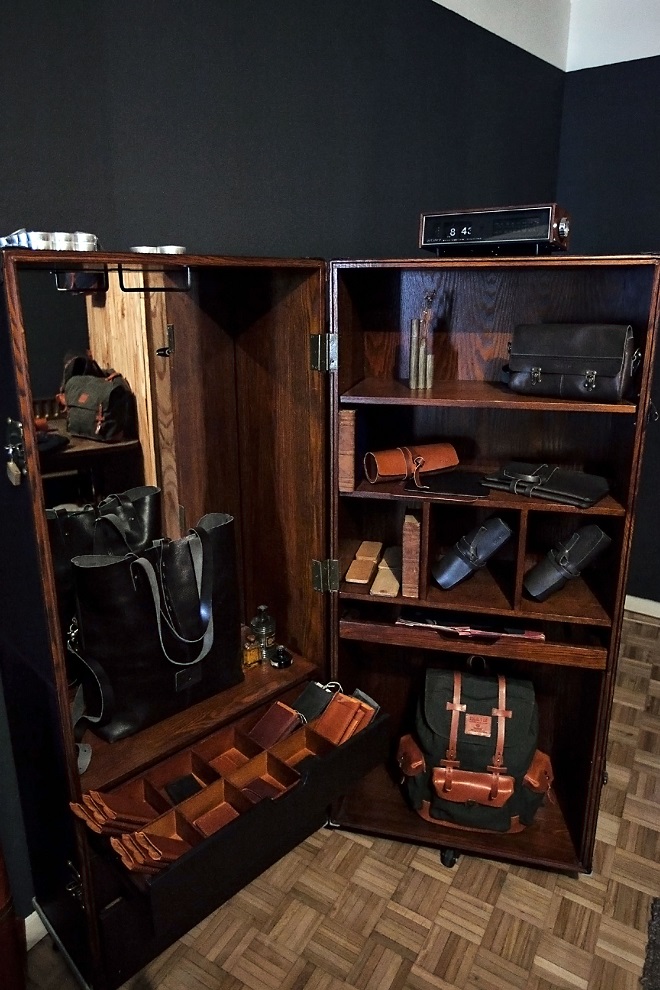
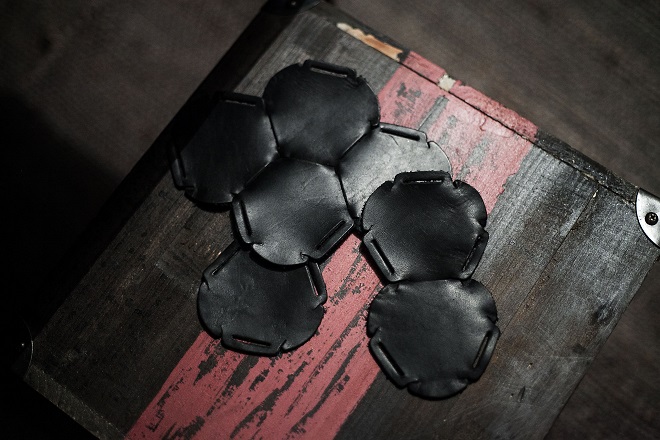
Lima’s vision and commitment to local sourcing has also begun to transcend Alcanena: his new line of backpacks are fashioned out of rare ‘Selvedge’ denim, the canvas equivalent of vegetable-tanned leather, produced locally using an extremely old school, almost ancient method involving antique looms.
Selvedge is actually a Japanese custom, typically made with 100% cotton yarn: heritage looms weave the twine so strongly that the edges simply can’t unravel, and the variation and imperfections of the weaving process lend special character to the final product – beautiful irregularities that make them extra unique. Like vegetable tanning, it’s a complex process. “Just to prepare the loom takes one or two days,” said José. Their canvas is sourced from a factory in the Northern city of Braga, the sole producer of the rare fabric in the Iberian coast.
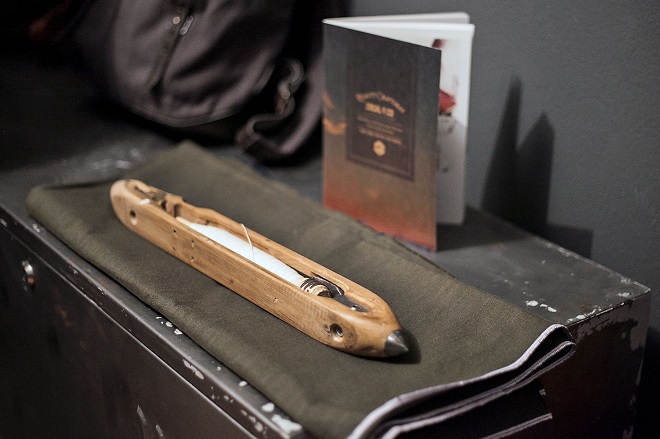
Ideal & Co seems to stand a head above the rest in their field. They consider themselves storytellers as well as bag makers, and they remain a vital link between local heritage operators and the globalized market. As a mouthpiece for this boutique industry, for them, communication is paramount.
“Others might use vegetable-tanned leather, but they don’t know why: they don’t communicate about the leather: why it’s important, why it’s better. We felt it was very important to communicate all this. We are a little company, but I think we can bring attention to this region, to the people who make it work,” José said.
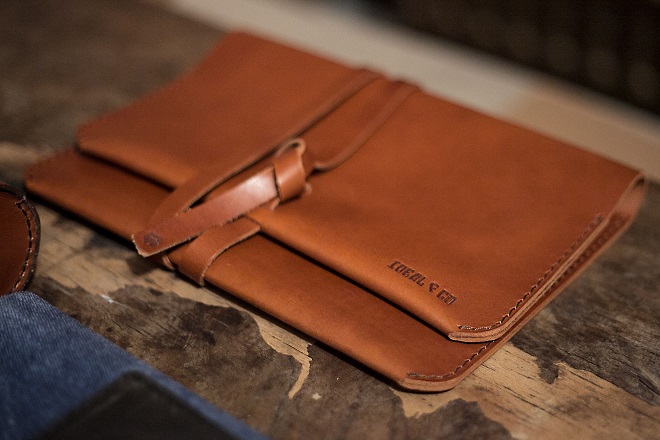
Most uniquely, a single artisan creates every Ideal & Co product from start to finish: each leather is cut, sewn and seen through by a single set of eyes and hands. It’s a rare approach that invests a sort of emotional energy in the finished object, not to mention consistency and pride: a palpable synergy that enhances the product’s longevity and value.
“We try to do small products, but the right products: nice ones, with quality. Because of that, the process is slow…but we need to keep doing the right thing, and grow it.”
Hallmarks of Ideal & Co’s methods are embedded thoughtfully into every product: the signature of each solo artisan on each label, the definitive white selvedge rim at the opening of each canvas backpack…subtle guarantees of superior craftsmanship: seals of ‘the real deal’.
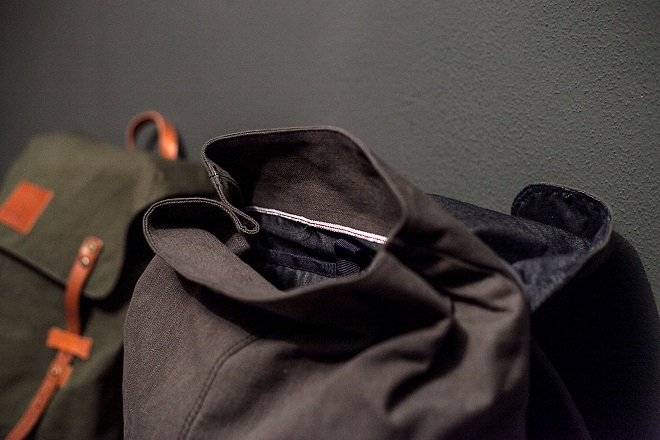
In selecting materials that beautify with age, so to do their bags and wallets. They are timeless. This dovetails in the brand’s mantra: ‘Some things stay with you forever’. Jorge chimed in: “We don’t make seasonal products. We make them for all our life.”
Like Pedro Fernandes’s Noise Goods, Ideal & Co appear to be taking a bold stand against the modern world’s culture of planned obsolescence and disposable consumption. They’re saying ‘Let’s do things right the first time’: the way it ought to be done.
“Ideal & Co appear to be taking a bold stand against the modern world’s culture of planned obsolescence and disposable consumption. They’re saying ‘Let’s do things right the first time’: the way it ought to be done.“
José led us into the front office, an airy, light-filled room with French doors that opened out to a balcony overlooking the corner, and the Gothic Renaissance Igreja da Misericórdia cathedral, stoic and high against the radiant blue morning, as it has been for over 600 years. Amidst glossy design and typography books on Lima’s shelves, I noticed an ornamental sign: ‘No Ordinary Day’.
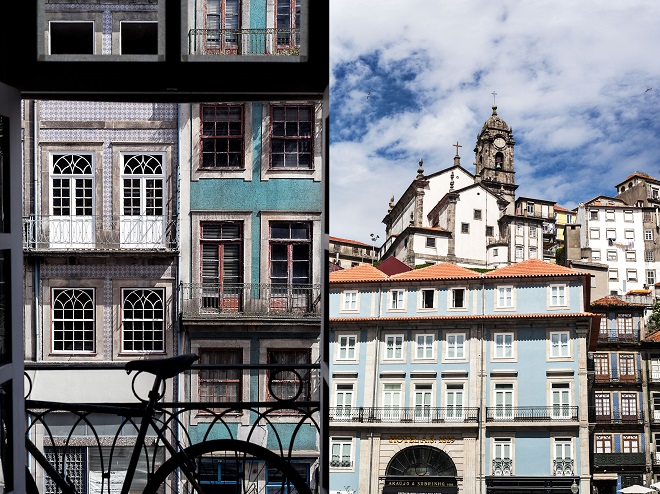
It’s been barely three years since Ideal & Co opened their balcony doors to the world, but already they’ve achieved so much – more than most brands ever will. Still, there’s no getting in the way of the Porto work ethic. “We still need to work more, and work harder. It’s a difficult market: you have a lot of competition, and it can be hard for a new brand. But it’s all about communicating, and we intend to keep doing it.”
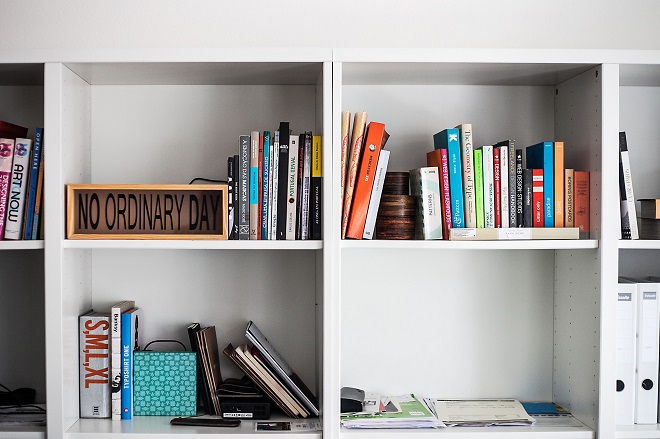
It’s one thing to establish a brand, but another thing altogether to assume responsibility for a traditional industry, and almost single-handedly galvanize the surviving lineage of a long cherished, if not temporarily forgotten, heritage. By investing in the old ways, they revitalize, they sustain: they carry a legacy forward. One can’t help but admire this.
“We don’t make seasonal products. We make them for all our life.“
On our way out, as has become customary everywhere we’ve gone in Portugal – a land full of friendly, welcoming, kind people – we were again offered gifts: a canvas tote with leather straps for HK, a one-of-a-kind vegetable leather cardholder for me.
“In 50 years, you have to send us a picture of it,” said José. Something tells me that by then, Ideal & Co will have aged just as well.
*Photography by Honor Kennedy
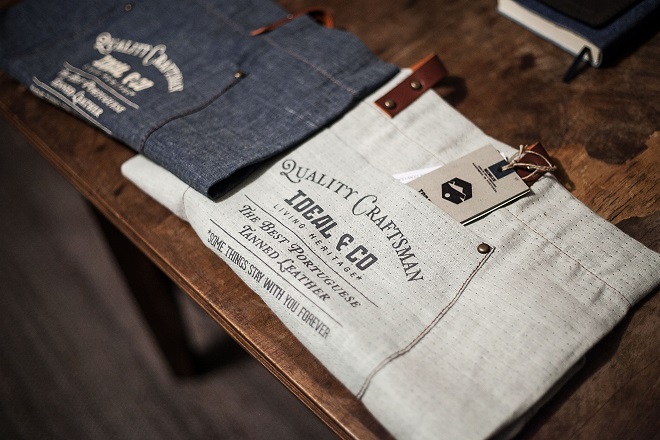
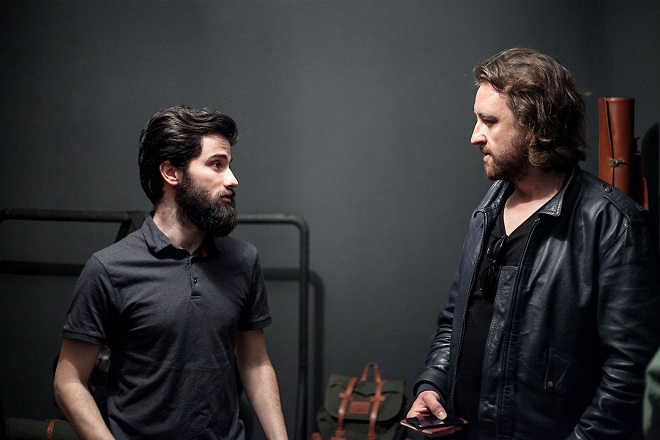





 Carry Awards
Carry Awards Insights
Insights Liking
Liking Projects
Projects Interviews
Interviews
